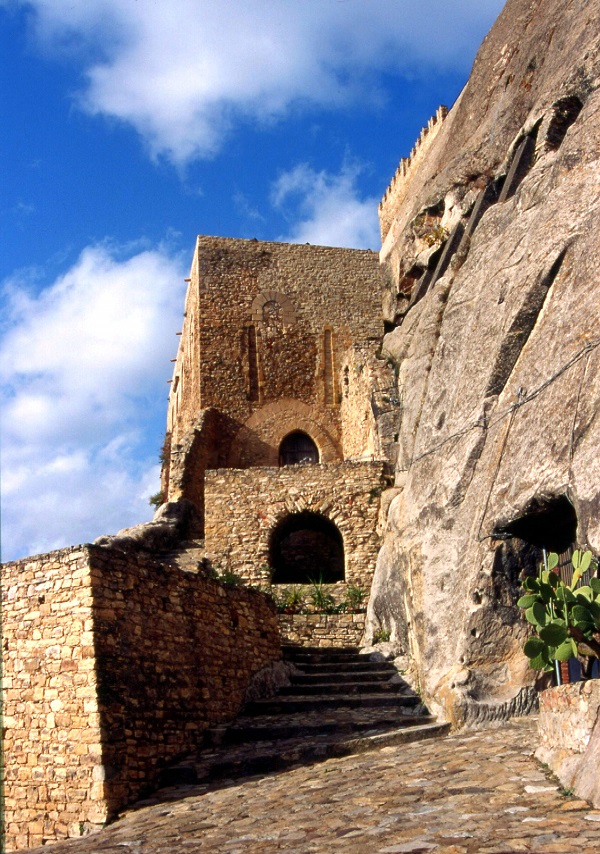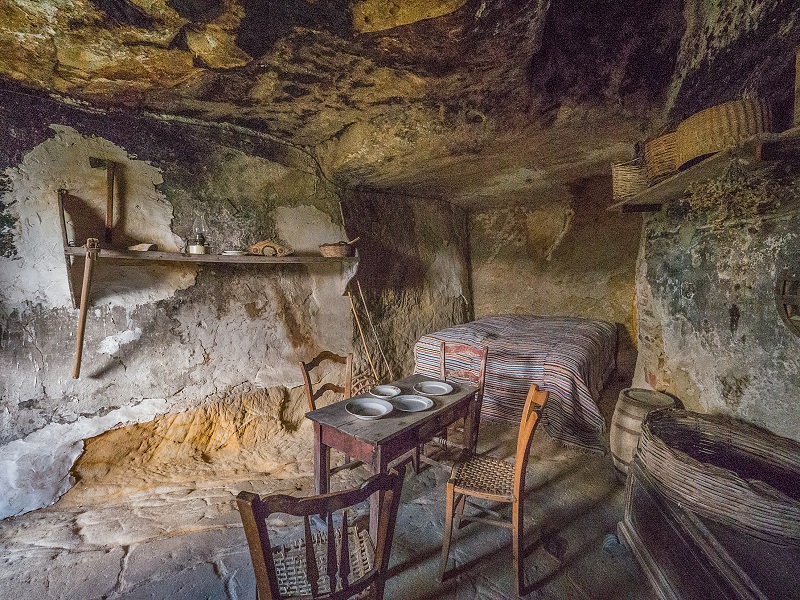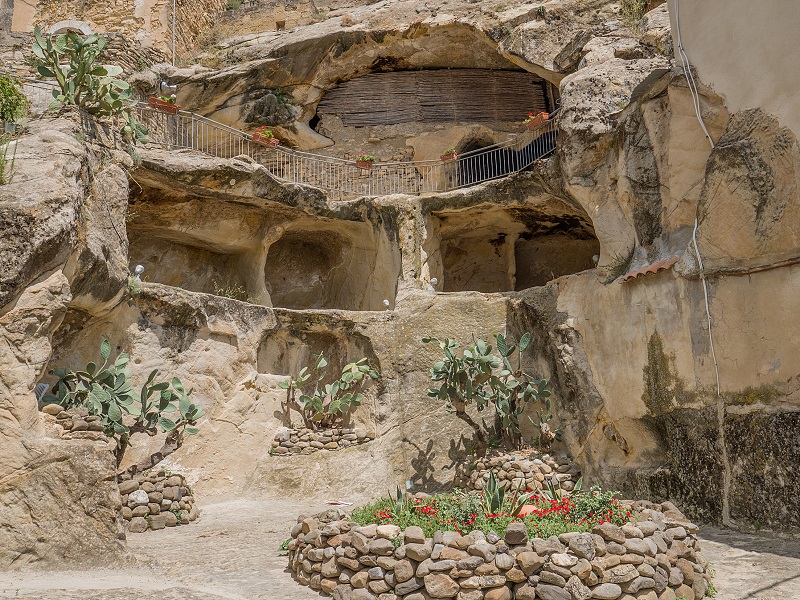Sperlinga
Sperlinga (Enna) is one of the most beautiful villages in Italy: entering into the heartland of Sicily is not a mystical or figurative operation.
You get into this village, in the middle of Sicily, by digged areas into the sandstone. So, It does not surprise why its name Sperlinga derives from the latin Spelunca, (cave, grotto). It is surprisingly, instead, its Castle, dated back year 1000, that rises and penetrates into the rock, shaping it. Ruins of an ancient drawbridge, show human talent and hard work, in places that often, whispering, tell us the meticulous Siculi work.
Moving forward slowly, you start feeling the warp and the natural rock changing, now in the workshop for metals, now in prison, now in a large stable or in a water tank. An intimate and protected space, so blended with the surrounding environment as to become impossible to conquer, as evidenced by the damming of a French garrison at the time of the Sicilian Vespers and the resistance which lasted a whole year. Keep on moving on, beyond the service areas, we face a mysterious environment which preserves in its walls twelve small niches spaced apart with increasing gaps. For some it would be what remains of a place of worship, for others the evidence of an ancient and unknown system of measurement of time and seasons.
At this point you can only move up and, during this rise, stomp the steep stairs, almost like wounds in the hard rock, and finally reach to see the sky again, through the ancient battlements, enjoy the view from the castle tower. In a place called Sperlinga you cannot miss the caves, or rather, in this case the “aggrottato”, which consists of a large complex of rooms carved out by man on a whole side of the castle dominating the village
The charming village carved in the wall, has 50 caves accessible by stairs and connected by small streets digged into the rock. Every caves was used as a small house, with one or two rooms, and lately, some of them have been bought by the Municipality and turned into an ethnographical museum.
Truly, the whole area around Sperlinga is dotted with caves digged into the sandstone in an intricate system of artificial caverns, in which the sites of Contrada Rossa and Peirito are, probably places of worship and burial of the early Christians.
Beneath the castle is the Church of Mercy, first church of the village, famous for a beautiful wooden crucifix from the old church of the fortress. In order of size, there is the Mother Church, a building with a single nave commissioned by prince Giovanni Natoli in the 1600’s. The third church of the village is S. Anna from the second half of the 1600’s, attached to the convent of the Augustinians in which a wooden crucifix from the school of Friar Umile of Petralia is displayed.
The most typical traditional dish of Sperlinga is the frascatela, a polenta of durum wheat or grass pea flour, with lard and broccoli. However, the tortone could also be mentioned. It is a cake made with bread dough, fried in oil and sprinkled with sugar mixed with cinnamon.
Share this content!
LOCATION





